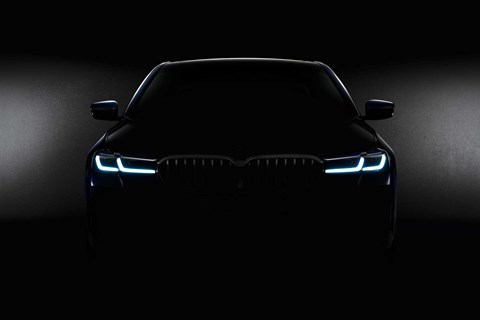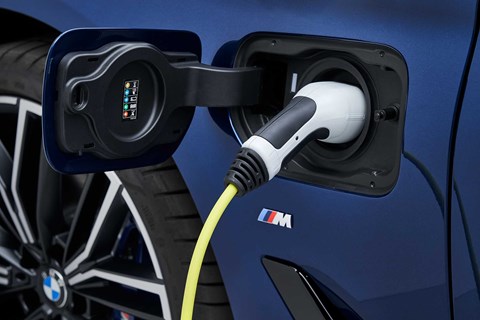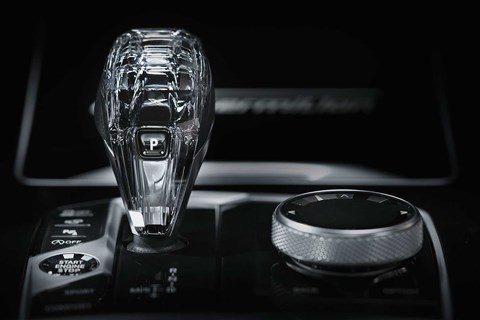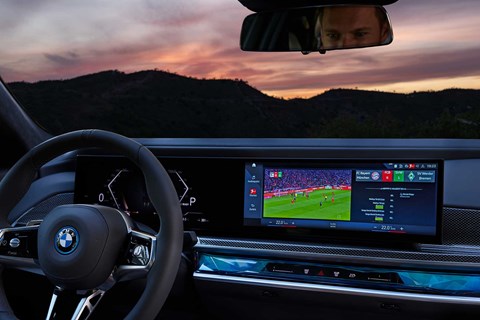► New 2023 BMW 5-series scooped
► Saloon due summer, Touring in 2024
► Electric i5 and brawny M5 to follow
The surprise isn’t that Munich is hedging its bets with the new 2023 BMW 5-series – that much would have been pretty obvious to anyone who’s been casting even the most cursory glance in the direction of Germany’s sportiest premium brand.
The surprise is just how comprehensive the new 5-series line-up will be. As well as pure electric, there will be plug-in and mild hybrids fuelled by petrol and diesel. There will be all- and rear-wheel-drive versions. There will be further steps towards self-driving, but there will also be driver-focused M5 saloon and – for the first time in a decade and a half – M5 Touring versions.
With the new G60 5-series saloon and G61 5-series Touring estates, BMW is making it clear that however many SUVs it launches, they are in addition to these traditional heartland bodystyles, not instead of. And simultaneously it’s making it clear that your choice of power source doesn’t have to dictate your choice of body.
While Mercedes has opted to create a unique but polarising low-drag design for its electric cars, BMW has – with the exception of the standalone electric-only iX – embarked on a different philosophy. To keep costs down, make lifecycle adjustments as painless as possible and ensure maximum production flexibility, all drivetrain options are to be clad in the same one-style-fits-all body. That could even include the hydrogen fuel-cell currently earmarked for the X5.
BMW’s flexible strategy: pairing electric cars with petrols, diesels and hybrids
In essence, BMW’s approach mimics the Russian-doll strategy chosen for the latest 7-series/i7, the X3/iX3 and the future X5/iX5 to name only the most prominent pairs. Like the 7-series/i7 (with their 0.24 drag coefficient), the upcoming 5-series/i5 won’t be quite as slippery as the wholly bespoke Mercedes EQS (with its Cd of 0.20) and EQE (0.22). But then it won’t look like a panda jellyfish on wheels, either.

A designer from Munich sums up the logic: ‘Since it is unclear when exactly EVs will take off, in which markets and with what kind of volumes and growth rates, or how the combustion engine is going to fare in the future, maximum aerodynamic efficiency and minimum visual differentiation is the safest short- to mid-term bet.’
Unlike the next BMW 3-series, which switches to the all-new Neue Klasse matrix for model year 2025, the 5-series replacement is based on an evolution of the familiar CLAR cluster architecture.
The new 2023 BMW 5-series: paired with the i5
Just as the i4 is in essence a mildly restyled 4-series Gran Coupe stuffed with batteries and one or two e-motors, the modular DNA of the next 5-series is sufficiently flexible to generate almost a dozen different petrol, diesel, PHEV and battery-electric versions.
Significantly, the electric i5 will also be available in estate form, putting it in head-on competition with the upcoming Audi A6 e-Tron Avant and the Volkswagen ID. Aero Sportwagon. Mercedes-Benz will not offer a battery-powered estate version of the new E-Class.
Engines, specs
Expect a wide choice of powertrains for the next 5-series, designed to hoover up every which buyer, private and corporate, at various levels of budget, premium aspiration and performance:
Petrols
- 520i 190bhp four-cylinder
- 530i 255bhp four-cylinder
- 540i 370bhp straight six with 48-volt mild-hybrid tech
Three plug-in hybrids (PHEVs) with mimimum electric range of 50 miles
- 530e 292bhp
- 550e 480bhp
- M560e 565bhp

Diesels – because some people still like a super-long range
- 520d 195bhp four-cylinder
- 530d 340bhp
Design story
The styling of the new 5-series features, like the 2025 3-series, a relatively wide shark-nose grille flanked by high-tech headlamps. Without the vertical kidney divider and the roundel badge above it, there’s a strong hint of Skoda about the nose.
As depicted in our artist’s impression, at the back there’s a full-width light bar, bold bumpers without visible tailpipes (except for M and M Performance models), wider track and bigger tyres. It’s a low-risk design in a market that tends to punish high-risk solutions. The optional glowing grille is expected to feature different mood variations, ranging from subdued to sporty.
Inside, the new 2023 BMW 5-series interior was clearly inspired by the latest 7-series. Of particular note are the use of crystal-style controls for seat adjustment, iDrive and gear selection (below), as well as the increased choice of man-made materials like the Veganza trim instead of traditional wood and leather.

Note also the clever new head-up display, which runs along the bottom of the windscreen. Cheaper than the bulky and heavy conventional projector set, this slim and light alternative could well take future instrument binnacles down a more pragmatic avenue.
Infotainment and the next iteration of OS
Lifted straight out of the 7-series, the Operating System 8 (OS8) fitted to G60/61 focuses on touch and voice control. It abandons almost all knobs, switches and thumbwheels in favour of a large curved display, a full-width interaction bar and optional augmented-reality displays within the driver’s core field of vision. Old die-hards may struggle to cope, but BMW is confident the rest of the population will lap it up.

The choice of driver-assistance systems continues to get broader and more complex. Motorway Assist takes the sting out of slow-moving dual-carriageway traffic. Level 3 autonomous driving – where the car can drive itself in some situations, but the driver needs to be ready to resume control – will become available in certain European markets by the middle of 2023. BMW has, however, quietly withdrawn even a tentative intro date for Level 4 (driver largely unnecessary), while Level 5 (steering wheel and pedals no longer required) has moved even deeper into the crystal ball.
Autonomous levels 1-5 explained
Nevertheless, some new assistance systems make their debut on the new 2023 5-series. It can memorise selected parking manoeuvres and re-execute them on demand – even via a remote-control app while you’re standing outside the car.
The new Five can take care of all steering, braking and throttle actions when this parking system is active, and can switch between forward and reverse gears itself. Another option will be Active Speed Limit Assist, which extends the scope of acceleration, deceleration and steering actions, although it’s not close to a full autopilot system (thank goodness).
When can I buy the new 2023 BMW 5-series?
G60 production starts in July 2023, with the Touring due to go into production early in 2024. Such a wide array of powertrains and options is planned that some of the combinations listed above may not reach showrooms until 2025.
The 5-series and i5 are to be introduced simultaneously in all major markets, as with the 7-series. As before, only China gets the long-wheelbase saloon (G68) in both combustion-engined and electric guise.
That’s the smart thing about Munich’s current open-technology approach: you can go all-in when the time is right, you can hang on a bit longer with more conservative options, or mix and match until legislation intervenes or the rate of electric adoption changes.
More BMW spyshots